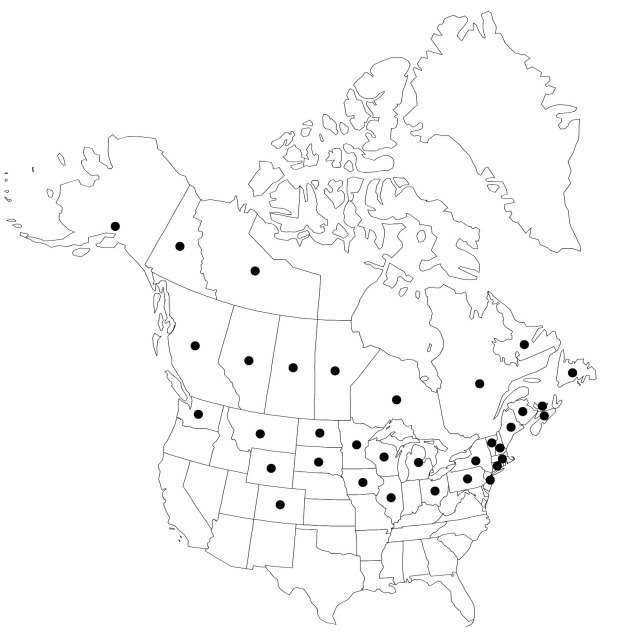Carex deweyana
Ann. Lyceum Nat. Hist. New York 1: 65. 1824.
Plants densely cespitose. Culms 14–89(–101) cm × 0.3–1.1 mm wide, smooth or papillose. Leaves: ligule on distal leaf 0.9–2.2 mm, as long as wide; blades 0.6–4.2 mm wide, widest blade 2.4–4.2 mm wide. Inflorescences 12–56 mm; proximal internode 6–34 mm; proximal bracts 6–49 mm, awn 7–46 mm; spikes (2–)3–5, longest ones 2–5, usually gynecandrous; proximal spikes with 1–2 staminate and (5–)7–12 pistillate flowers, 5.2–11(–13) × (2.1–)3.7–6.9 mm; terminal spikes usually with 1–3(–5) staminate and (7–)9–13(–16) pistillate flowers, 6.8–13 × 3.8–8.1 mm. Pistillate scales with colorless or stramineous margins, 3–4.5 × 1.6–2.2 mm, body 2.8–4.2 mm, apex acuminate to short-awned, awn to 0.6 mm. Staminate scales with colorless or stramineous margins, 3–5.3 × 1.2–1.6 mm, apex acute to acuminate or occasionally short-awned to 0.3 mm. Anthers (1.8–)1.9–2.2 mm. Perigynia erect to ascending, green to pale brown, 0–5-veined abaxially, usually veinless adaxially, narrowly ovate, 4–4.9(–5.2) × 1.3–1.5(–1.6) mm, 2.9–3.8 times as long as wide, apex gradually tapering; beak 1.4–2.1 mm, 0.32–0.4 times as long as perigynia, margins serrulate, apex entire or bidentulate, teeth to 0.2 mm, 0–0.05 times as long as perigynia. Stigmas 1.9–2 mm. Achenes 1.8–2.2 × 1.2–1.5 mm wide, 1.3–1.8 times as long as wide.
Distribution

North America.
Discussion
Varieties 2 (2 in the flora).
Selected References
None.
Key
| 1 | Longest inflorescences 35–56 mm; longest proximal internodes (11–)13–34 mm; longest proximal bracts 15–49 mm. | Carex deweyana var. deweyana |
| 1 | Longest inflorescences 12–32 mm; longest proximal internodes 6–10 mm; longest proximal bracts 9–12(–18) mm. | Carex deweyana var. collectanea |